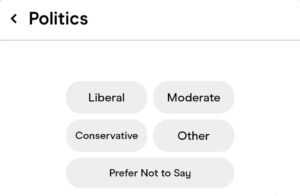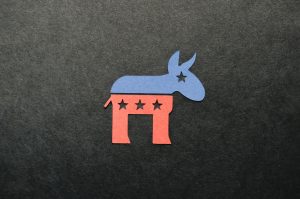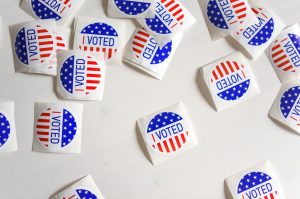In 1992, a record-breaking number of women ran for political office, and even more went to the polls to vote for them. Twenty-four women won seats in the House of Representatives that year, and the number of women in the Senate nearly doubled, from four in the 102nd Senate to seven in the 103rd.
Women were propelled forward by disgust over sexual misconduct claims against newly-elected and soon-to-be impeached President Bill Clinton, with regards to his alleged behavior with Gennifer Flowers, in addition to Justice Clarence Thomas, who managed to be seated on the U.S. Supreme Court with bipartisan approval despite sexual harassment claims by Anita Hill.
It was the “Year of the Woman,” celebrated for those women finally taking office and making their first strides toward leveling the gender field in Congress.
Yet, in 2018, out of 535 members of Congress, only 20 percent are women.
After women like Dianne Feinstein marched into Congress in 1992, ready to change history forever, men shut them out completely, according to Annie Logue, executive director of the Chicago Women’s League of Voters. Logue says men hoarded their political power by teaming up against women, which caused many of the freshmen, female candidates to be booted out of office in the next election by their own constituents. This rolled gender equality in Congress back to where it once was.
More than two decades later, vast numbers of women are running for office following their outrage over Donald Trump’s presidential victory in 2016, and by many policies he’s put in place since taking office. As 200 women across the country celebrate primary victories and gear up for November’s general election, many against male longtime incumbents, 2018 has been christened the Year of the Woman (again).
But will it stick this time?
“Congress is more gendered than corporate America. Those women [in 1992] were elected because of their gender, not because they were the best candidates,” Logue says, referencing standout figures such as Barbara Boxer, Elizabeth Furse and Feinstein.
Instead, Logue says what really matters in guaranteeing gender equality in the political realm is focusing on diverse female candidates who are the best fit for their constituents instead of focusing merely on gender.
If people truly want to see gender representation in Congress, Logue says they can’t just support women of one political party over another.
“Women in office don’t necessarily always mean progressive views,” Logue says. “We want the best person to represent our issues.”
In Chicago, four women have already stated their interest in running for mayor ― Cook County Board President Toni Preckwinkle, State Comptroller Susana Mendoza, former Chicago Police Board President Lori Lightfoot and Cook County Circuit Court Clerk Dorothy Brown. The election of one of these women would put their name down in history as the second woman to ever be mayor of Chicago, following Jane Byrne in 1979. Preckwinkle, Mendoza, Lightfoot or Brown could end up becoming the first woman of color to be mayor, as well.
Logue says the reason so many men have claimed the mayoral job title is due to a long history of patriarchal nepotism in the city.
“The typical Chicago mayor is a short, Catholic, white man with the last name Daley,” Logue says. “It will be interesting to see what happens this time around, with a few women running ― and another short, Catholic, white man with the last name Daley.”
Sarah Geoghegan, pre-law student at Marquette University, says it’s more important to elect liberal-minded female candidates in order to disrupt Trump’s agenda, and points to the fact that Republicans, historically, tend to nominate white, suit-and-tie, male lawyers instead of women.
“[The GOP] may look under every rock and bush, but you’re asking for too much,” Geoghegan says, referencing the numerous nearly-unattainable qualities the GOP requires of female candidates, such as being a highly educated, economically-conservative, partisan person. All the while, they must also be vehemently against abortions with the sole ambition of defunding Planned Parenthood, not to mention the need to stand behind policies that protect rape and domestic violence offenders, Geoghegan said.
Geoghegan largely attributes the rise in women running for office in 2018 to a blue wave occuring in the U.S. following the defeat of Democratic candidate Hillary Clinton. She says that American women looked at Clinton and said: “She couldn’t do it, but I can.”
Already a month before the general election, Arizona is set to have its first female senator ever as the sole candidates, Republican Martha McSally and Democrat Kyrsten Sinema, are both women. In Michigan’s 13th district, Rashida Tlaib is set to be the first ever Muslim woman elected to Congress.
Robert Watkins, associate professor of political science and cultural studies at Columbia College Chicago, also attributed the numbers to the #MeToo movement, which propelled 1992’s Year of the Woman, as well. Except this time, it’s not Gennifer Flowers and Anita Hill. It’s Dr. Christine Blasey Ford and two other women who have accused Supreme Court Justice nominee Judge Brett Kavanaugh of sexual misconduct; it’s Samantha Holvey and the 21 other women who have accused Trump of sexual harassment or assault.
“There is a hunger in the electorate for a fresh take and for new voices and perspectives, perhaps linked to Trump and #MeToo,” Watkins wrote in an email statement.
Sexual harassment ― or as Geoghegan woefully puts it, “the norm” is one of the countless daily obstacles women have to face in their political campaigns and careers that their male counterparts do not, both in 1992 and today.
Erin Schrode, a candidate in the 2016 congressional race for California’s 2nd district, would receive bigoted, anti-semitic messages every day, and long after she lost her primary. One social media user wrote: “All would laugh with glee as they gang raped her and then bashed her bagel-eating brains in.”

Female candidates must also deal with difficulty in fundraising, according to Logue, who said that male candidates don’t have to campaign as strong simply because of their gender and their access to funding. Meanwhile, candidates like the now-legendary Alexandria Ocasio-Cortez from The Bronx, New York, went door to door grassroots-campaigning her way to victory.
Having lived through and voted in the 1992 election, Watkins is hopeful that this time gender equality will stick due to “the massive cultural change along with growing political representation.”
Logue says senators’ confirmation of Kavanaugh will bring a tidal wave of women to replace them in the Senate in November. She points to former Sen. Alan Dixon’s chair, which he lost to Carol Moseley Braun in 1992 after confirming Thomas to the Supreme Court. Referring to Dixon’s seat as the “Defense Against the Dark Arts position at Hogwarts” for its constant revolving door of senators, including Barack Obama and Tammy Duckworth, Logue says she’s surprised more senators didn’t think of the repercussions Dixon faced when they confirmed Kavanaugh.
Geoghegan is confident the 2018 elections will mark a turning point for women both in Congress and at the local level, and is not dismayed that women’s history continues to repeat itself because women continue to learn from their predecessor’s mistakes.
“A woman scorned is one of the most dangerous things,” Geoghegan says. “You pushed her down, and you know what? She told me how to get up.”
Additional reporting courtesy of AP.







Be First to Comment